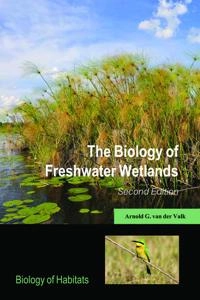

The biology of freshwater wetlandsUpplaga 2
- Upplaga: 2a upplagan
- Utgiven: 2012
- ISBN: 9780199608959
- Sidor: 296 st
- Förlag: Oxford University Press
- Format: Häftad
- Språk: Engelska
Om boken
Åtkomstkoder och digitalt tilläggsmaterial garanteras inte med begagnade böcker
Mer om The biology of freshwater wetlands (2012)
2012 släpptes boken The biology of freshwater wetlands skriven av Arnoud van der Valk. Det är den 2a upplagan av kursboken. Den är skriven på engelska och består av 296 sidor. Förlaget bakom boken är Oxford University Press.
Köp boken The biology of freshwater wetlands på Studentapan och spara pengar.
Referera till The biology of freshwater wetlands (Upplaga 2)
Harvard
Oxford
APA
Vancouver



















